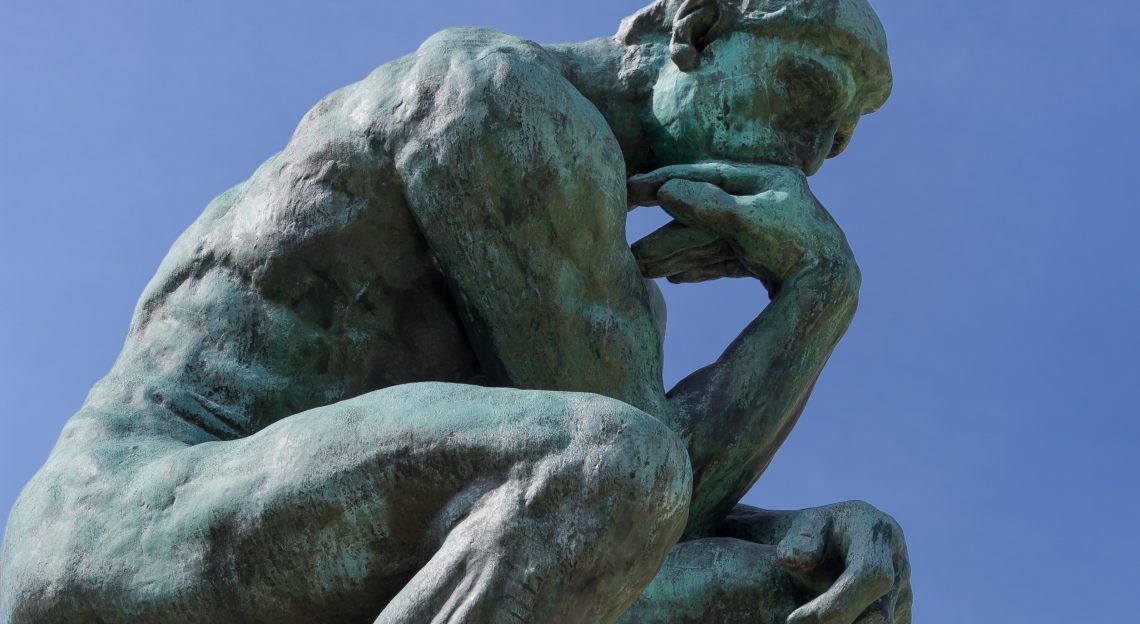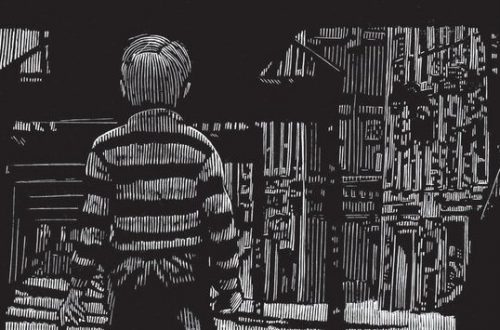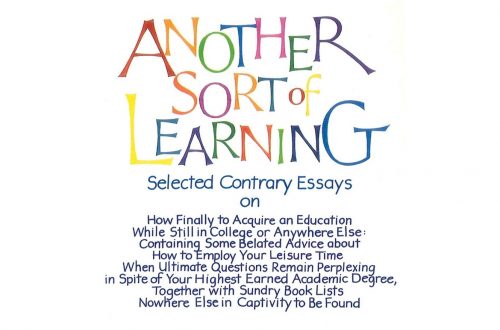by Bridget Donohue
Auguste Rodin’s “The Thinker” sure does look like he is stewing over important matters. But does the over-one-hundred-year-old bronze figure actually know anything? According to Dr. Dru Johnson, Assistant Professor of Biblical Studies at The King’s College in New York City, probably not. In his book Scripture’s Knowing: A Companion to Biblical Epistemology, Johnson asserts that, for one thing, real knowing (as opposed to a simple, mechanical acquisition of data or even sharp, critical thinking) is a process of responsible struggle that culminates in an event—an event that we experience as an “aha” moment. Trouble brews, though, if we focus on the “aha” moment without examining the process that led to it. That’s because considering “knowing moments” in isolation doesn’t take into account the human body and the community in which they are bound up. For another thing, we learn through guided processes. Finally and most importantly, knowing is not simply grasping an idea and “getting it” intellectually; it is listening to trusted authorities and doing what they prescribe in order to see what they are showing you (16).
Johnson insists on and highlights the importance of listening to trusted authorities in the knowing process by taking his reader through the Genesis and Exodus stories, and the Gospels. In Genesis 2 and 3, “knowing gone awry” happens when Adam and Eve listen to the serpent rather than God. Because they trust the wrong authority, they know that they are naked. Likewise, the repeated “so that you will know” phrase in Exodus points to the purpose of the plagues: God wants the Egyptians to know who he is, but their hard hearts prevent them from trusting Moses as the authority that is leading them to this knowledge. The Israelites, on the other hand, trust Moses and “see” YHWH as a result of it:
Thus the Lord saved Israel that day from the hand of the Egyptians; and Israel saw the Egyptians dead upon the seashore. And Israel saw the great work which the Lord did against the Egyptians, and the people feared the Lord; and they believed in the Lord and his servant Moses (Exod 14:30-31).
The Gospels, Johnson says, portray more “odd affairs,” by which he means that it is not always crystal clear who truly knows and who does not (e.g., the blind are those who really see). In order to wade through these muddied waters, Johnson notes that in the Gospels listening is the main metaphor for knowing and then takes the reader on a messy journey with the disciples, their process of listening and knowing chock-full of fits and starts but climaxing in the transfiguration account where they hear God’s voice: “This is my beloved son, to him you shall listen” (Mark 9:7). Even after this epiphany, though, the disciples flounder (Johnson even calls them “dolts”), which implies that they have not fully embraced Jesus as the authority whose instruction they should follow.
Johnson cinches his “knowing by listening to trusted authorities” assertion by pointing to rituals as a way of “embodied knowing.” “To know, I must do,” he says. A common misunderstanding of rituals is that they symbolically express our thoughts—that rituals are a “thinking man’s game.” Johnson turns this erroneous idea on its head by directing the reader to Genesis where God answers Abraham’s doubt with the ritual of the covenant (Gen 15:8-20). After this ritual, Abraham “knows” that he will possess the land, picks up all of his belongings and makes the trek to Hebron where he builds an altar to the Lord. This scene from Genesis illustrates Johnson’s suggestion that:
Rituals are not the outward expression of inner thought; at least they are not merely that. Neither are rituals created merely to solve a problem (e.g., sin offering solves the problem of immoral behavior), as many ritual theorists suppose. Rather, rituals are the authoritative instructions of the prophets meant to be listened to and practiced so that Israel might know what YHWH is trying to show her (70).
That rituals are not expressions of our belief systems; rather they themselves are a way to think—a way to know, is one of Johnson’s core insights. Practicing rituals, Johnson thinks, is “embodied knowing” at its finest. Rather than picking God’s brain to find out what he knows, the guided processes embedded in rituals enable the learner to see things that could not be seen before. It is what Michael Polanyi, one of Johnson’s mentors, depicts as “the plunge by which we gain a foothold at another shore of reality.” The knower is transformed, existing in and speaking the language of a new and different world. And, although Johnson is primarily addressing Biblical epistemology, his theory of knowing easily and naturally applies to other disciplines. Even the scientific enterprise, he says, “is deeply human, requiring embodied passions and rules of thumb, not objective and dispassionate observers…” (88).
Although this is a thin volume, it is jam-packed with nuances that will resonate deeply with and bring out the common sense in all lovers of Scripture. It might behoove all schools to ditch their end-goal of teaching students how to think critically and embrace a goal of “embodied knowing” instead. Our educational systems might just start producing communities of wise and animated learners with beating hearts rather than metal-casted statues.
To learn more about Dru Johnson watch this interview where he shares delightful stories about his own process of “coming to know.”
Also, if you are interested in learning more from Johnson about rituals as a way of embodied thinking, see this book entitled Human Rites: The Power of Rituals, Habits and Sacraments and this text from the Journal of Theological Interpretation entitled Knowledge by Ritual: A Biblical Prolegomenon to Sacramental Theology.

Bridget Donohue has been leading high school students in Scripture seminars for over 30 years. In her spare time, she enjoys simple yet elegant cooking, lots of hiking (Oregon’s Dog Mountain was a challenge), periodic snowshoeing in piles of lake-effect snow, biking the lonely Amish country roads of northern Indiana and horsing around with her puppy, Miss Maudie. She is the managing editor of Veritas Journal.






One Comment
Mary Radtke
I stumbled onto a podcast interview of Dru Johnson awhile back and was fascinated with his ideas about ritual and epistemology. I was further intrigued when I heard him talk about how he was influenced by Michael Polanyi’s work. Thank you for giving these ideas a wider audience, Bridget!